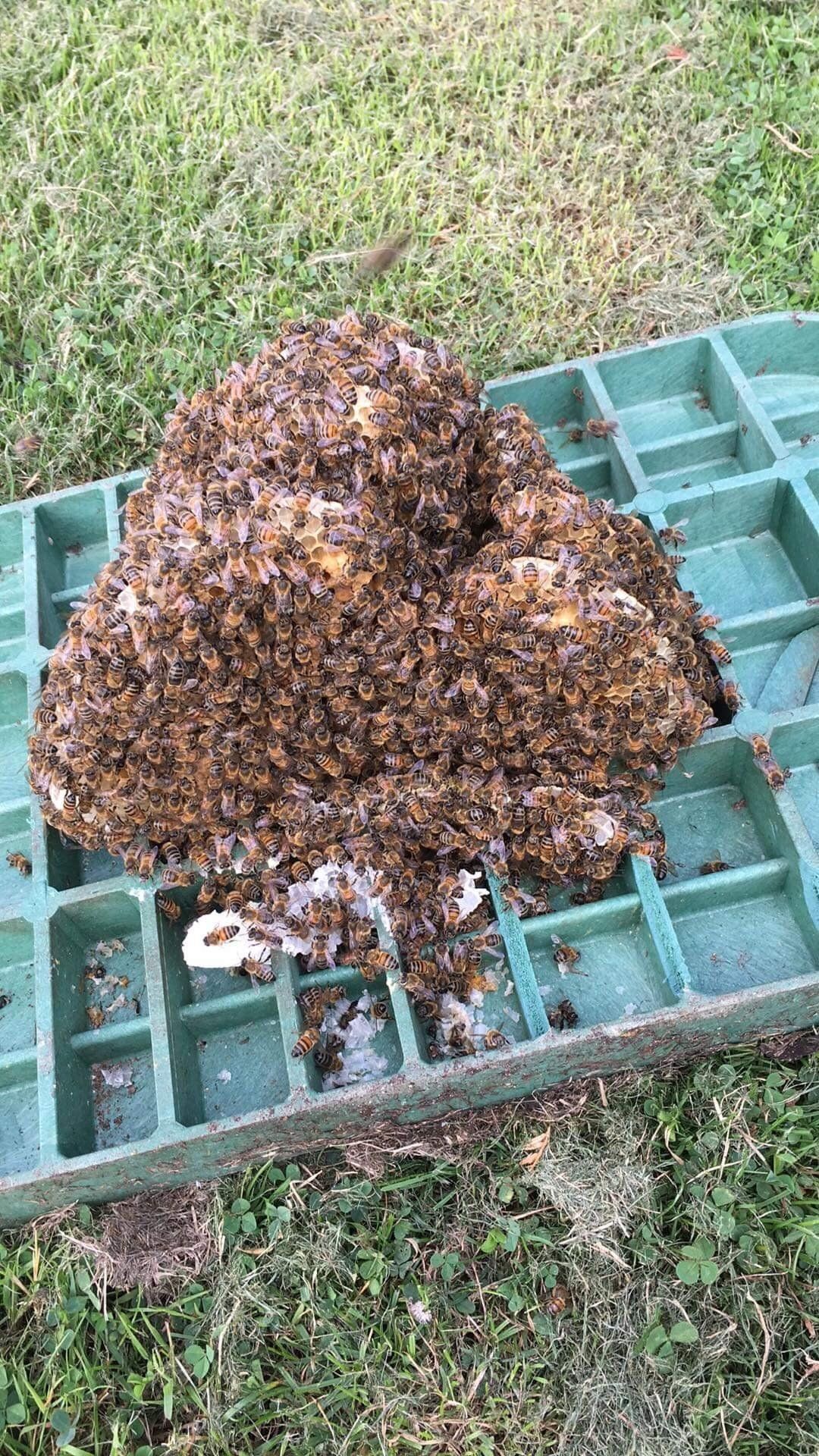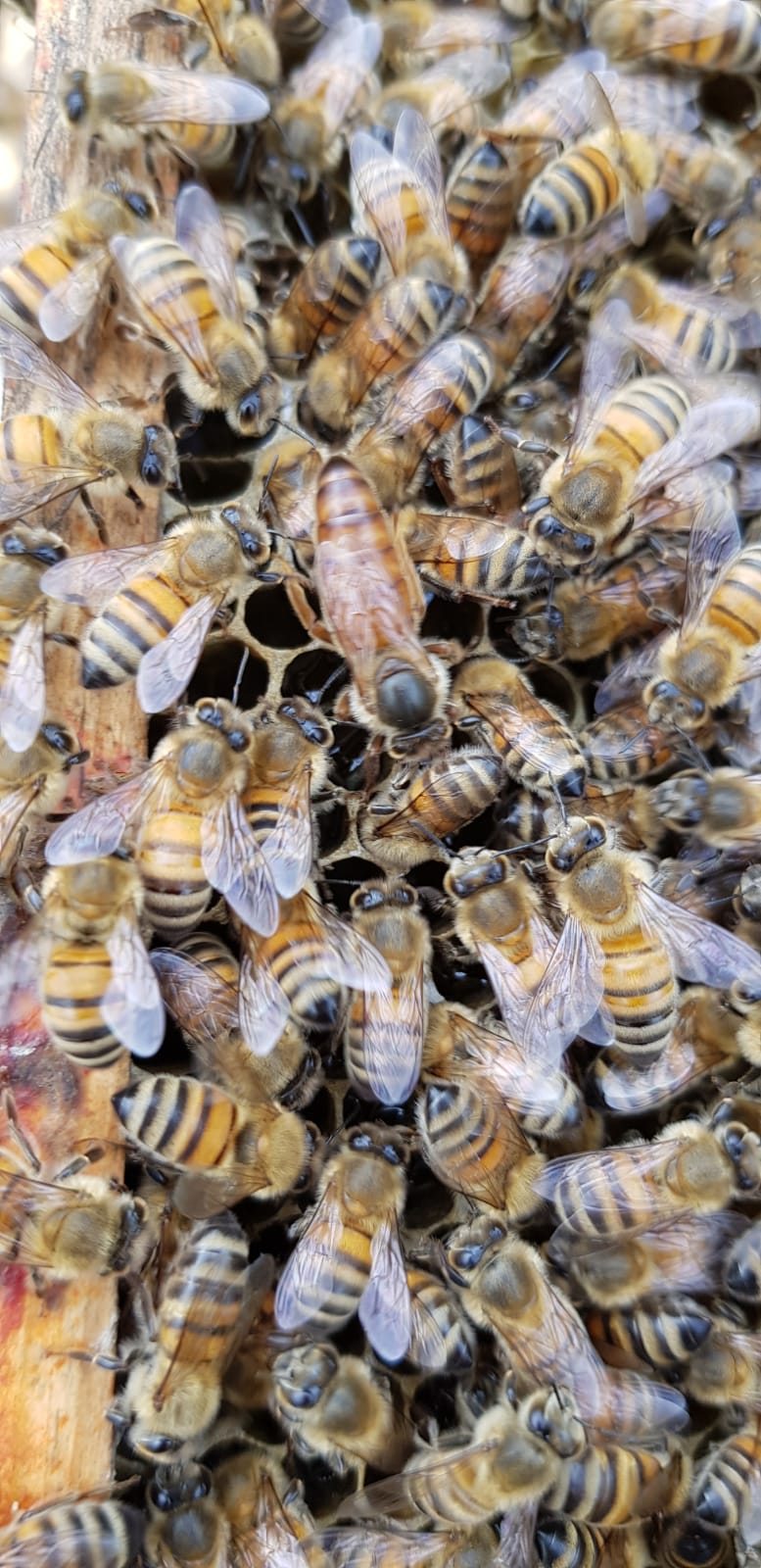Bee Swarms
Honeybees and what’s been happening lately
We have been very busy since our last blog. It’s the height of wasp season and on top of that, we are still saving the bees.
Here are two of our most recent assignments.
Carport capers
EGAPS- Ellery Gardening and Property Services, the bee-friendly gardening company, recently had a client with honeybees entering the carport. This started causing issues with the high volume of bee traffic in the garden – not what’s required when trying to tend to plants around an entry point. Even more so when power tools like mowers or hedge cutters are needed in the area. Upon our arrival, the traffic around the bees’ entry point was high and I wouldn’t want to look after the plants either without wearing the correct PPE. The good news is we could gain access from the inside via the plyboard backing. It turned out to be one of our largest removals yet. After weighing the bees (not individually, you understand) it was estimated that there were around 40,000+ of them. We love working with other companies to help save the bees.
Getting that golfing buzz
We were contacted by Jake at Pestokill, he had been called out for multiple wasp nests at one of his sites, where he was surprised to find that one was actually a honeybee colony that had been there a few weeks. It had made its home on the lid of a golf course’s sprinkler control system making it unsafe for use.
We could tell they had been there a few weeks as they had already drawn comb, had all stages of the bees’ life cycle (eggs, larvae, capped brood and hatched brood along with the stores of pollen and some honey). Jake couldn’t put the golfers at risk but also didn’t want to destroy honeybees.
We first put him in touch with David at Delta Pest in Coventry because Stratford upon Avon is slightly out of our area and he was closer to the site area at that point. Unfortunately, Delta Pest being fully booked it would have been a few days before the bees could be removed in this instance. David gave the same advice, however. Jake took this on board and had a job booked in afterwards that brought him closer to us and our area. He decided that he would place them in a homemade transport box and drop them off due to us being the closest to his next job.
Upon arrival, we had already gathered the materials needed to transfer the bees and comb to a more permanent structure, a poly hive due to the size. We went to work removing the comb from the lid with bees present and on the comb. All in all, we managed to remove the comb and bees from the lid in around 10 minutes and then use a spray to stop them landing back on the lid. This allowed Jake to have the now bee-free lid almost immediately.
A big thanks to Jake and Pestokill for thinking of the bees.
We have now added this hive to the apiary and it’s the second hive for us at Shires Honeybees. We felt it was the right time for this second hive rather than giving the bees directly to the apiary owners. We have to expand with the knowledge we are gaining through a tough (and I mean tough not just a local association type course) mentorship programme. This is done through our apiary’s beekeeper, who has kept bees in many parts of the world, with over 40 years’ experience and knowledge from those countries and varying backgrounds. Most UK beekeepers would love to have this knowledge. We are lucky enough that we can work together and alongside such a passionate beekeeper in this way.
We love working alongside other companies, be they gardeners, roofers, other trades and even other pest companies. This, however, was the first time we have ever had a small but establishing hive dropped off to us for cut out/comb removal. Credit is due to Jake and Pestokill for their effort in conserving the honeybees.
Thank you to all the pest companies we work alongside to provide honeybee removals, this includes Tom at Pure Pest UK and Wayne at WJM Pest Control to name but two. If we have missed you out feel free to drop us a message and we will add you to the list.
Thank you for reading and if you take anything from this, I hope it’s this: pest control is not always “evil” and can actually help nature through conservation projects like this. We don’t like the destruction of anything as everything in nature has a place until it becomes a public health issue
Until next time.
All Rights Reserved Shire Pest Solutions




